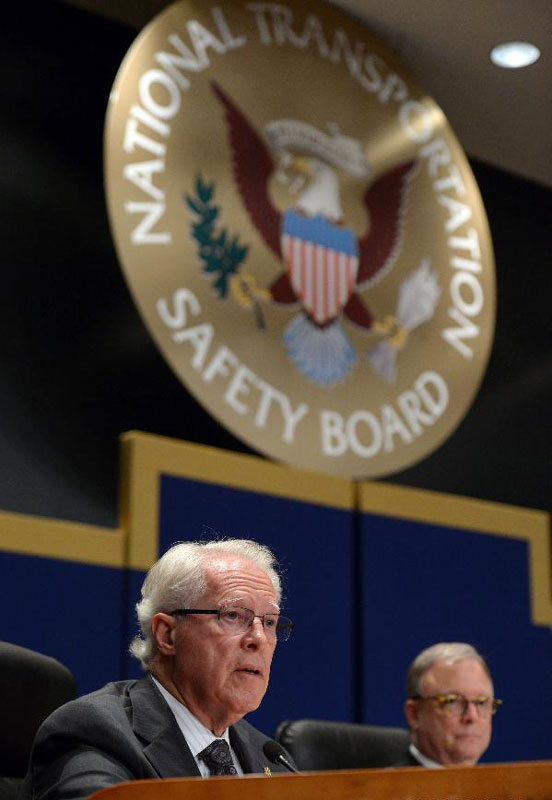 |
|
US federal accident investigators on Tuesday concluded that "mismanagement" by the pilots of Asiana Flight 214, including confusion over whether one of the airliner's key controls was maintaining airspeed, caused the plane to crash while landing in San Francisco, California, last year. [Photo/Xinhua] |
The US National Transportation Safety Board said that the complexity of the Boeing 777's autothrottle, as well as materials provided by the aircraft maker that failed to make clear when controls don't automatically maintain speed, also contributed to the accident on July 6 last year, which killed three passengers and injured about 200 others.
"In their efforts to compensate for the unreliability of human performance, the designers of automated control systems have unwittingly created opportunities for new error types that can be even more serious than those they were seeking to avoid," said NTSB acting chairman Chris Hart.
According to the report, the flight's three veteran pilots made 20 to 30 different errors during the landing approach. The major errors include that pilots didn't follow company procedures on calling out notifications about the plane's altitude, speed and actions they were taking during the landing approach.
Meanwhile, they also weren't closely monitoring the plane's airspeed, a fundamental of flying. Instead, they assumed the autothrottle was maintaining the required speed for a safe landing.
"Over-relied on automated systems that they did not fully understand," Hart said of the Asiana flight crew.
He warned that the accident underscores a problem that has long troubled aviation regulators around the globe: "increasingly complicated automated aircraft controls designed to improve safety are also creating new opportunities for error."
According to the report, the Boeing 777 has been in service for 18 years and is one of the world's most popular wide-bodied airliners, especially for international travel. Until last year's accident, it had not been involved in a single fatal crash.
Boeing Company immediately rejected the NTSB's notion that the 777's automated systems contributed to the accident, saying in a statement that "the auto-flight system has been used successfully for over 200 million flight hours across several airplane models, and for more than 55 million safe landings."
"The evidence collected during this investigation demonstrates that all of the airplane's systems performed as designed," said Boeing.
The NTSB investigators also questioned the Republic of Korea- based airline's pilot training program, saying that the trainee captain at the control that day lacked the training for landing an aircraft manually.
The Boeing 777 plane, with 307 people on board, crashed and burst into flames during its landing at San Francisco International Airport.
The three killed in the accident included two Chinese female students seated in the back, who weren't wearing their seat belts and were thrown from the plane. According to the NTSB investigators, if they had been wearing the belts they would most likely have survived.
A third Chinese female student was hit on the head by one of the plane's doors but survived the crash. She was killed when lying unconscious, she was run over by two rescue vehicles in the chaos afterward.